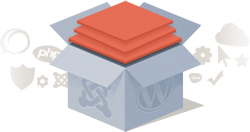Backups & Recovery
We have multiple backup and recovery options built right into the CloudAccess.net Platform. This provides piece of mind that your data remains safe and available to you when you need it.
Daily Automated Block Level Backups
All applications hosted with any of our service level agreements receives an automated daily block level backup that is stored remotely. A block level backup includes a full archive of the database and file structure for an application. Backups are retained for 14 days and we can restore any application upon request.
Automated Onsite Backup Procedure
A complete block level backup of an application (database and file structure) can be automatically moved to a /backups folder for easy restoration purposes, based upon client needs. The frequency of this depends on the cron job that triggers the backup, determined by the client.
Manual Backup Options
A complete backup of an application (database and file structure) can be taken manually by any client within the Cloud Control Panel™(CCP). We enable clients to create, download and restore their own backups with ease. The backup can remain within the CCP or it can be download.
Onsite Restorations
A copy of your database can be automatically dropped every few minutes using common tools like Akeeba Backup. This process requires less than a minute to complete for a standard size database. As an example, imagine that a portion of the application is broken and the database requires a restoration. Site files can remain untouched as onsite database files are restored within minutes.
Offsite Restorations
An offsite backup can be restored to the same server or an alternate server. Restoration time varies, but can typically occur within one hour. For example, image that a catastrophic event takes place on the server where the site resides. Production data is no longer usable and an offsite backup is needed. In most cases, within one hour, we can have the site restored to a different server within one hour.
Site Replications & Staging Environments
It is sometimes necessary to have a testing environment to ensure that any changes you are making do not cause harm to your main site. We provide the tools to easily create and manage these staging areas.
Staging and Production Environments
Clients can create a separate copy of a production site for development purposes. This copy would be used as a testing area before making any updates to the production site. As an example, imagine that there is an application update available, but you have a question about whether or not it will cause conflicts with 3rd party extensions or templates. Performing the updates in the staging environment first ensures that there are no adverse effects outside of your control. There are many other practical uses of this feature.
Application Replication
The Cloud Control Panel™(CCP) includes a replication tool which allows the user to automatically copy a staging site on top of their production site or vise-versa. This tool instantly creates an archive of the live file structure and database, moves the archives across the network, extracts them and overwrites an existing applications, all with the click of a mouse. As an example, image that you’ve been testing new functionality on a staging site and that functionality needs to be copied over to a production site. This can be done with just a few simple steps.

